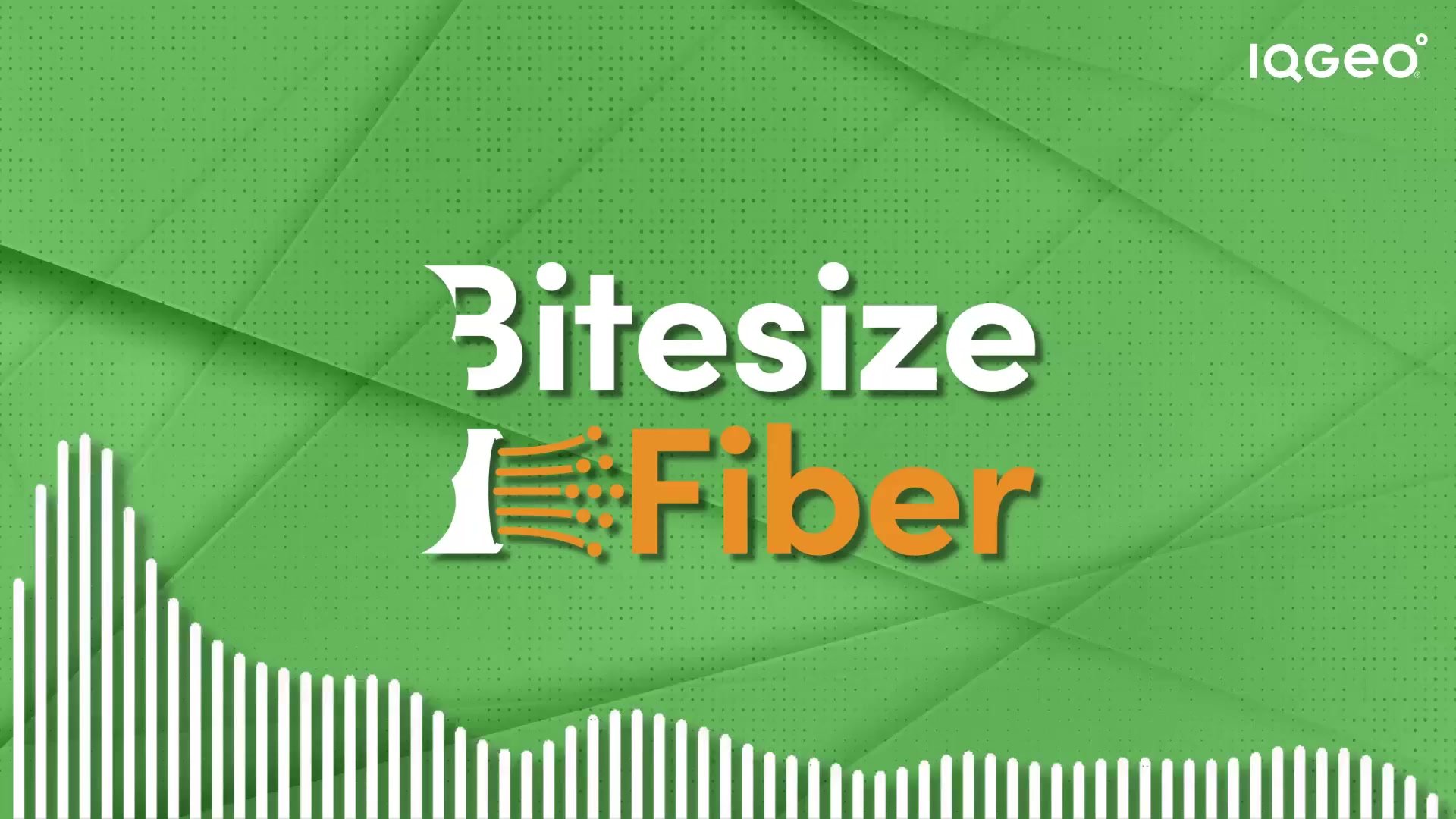Anyone in the business can tell you that an Fiber to the Home (FTTH) deployment is a daunting task. Discovering ways to improve FTTH profits is also a tough job. It's possible to subject each step to a detailed benchmarking analysis describing “best practices”.
Although each fiber build context has its own unique flavors, there are some key questions that are essential for anyone wanting to undertake this massive investment:
- How can we ensure that we minimise CAPEX?
- Can I get customers connected quicker, thus improving time-to-market?
- Is my process optimized to improve FTTH profits?
When embarking on such a journey, network operators need to connect customers in the short-term, but also need to consider this as a mid to long-term investment. Remember, fiber optic networks should have a minimum lifespan of 25 years.
Here at IQGeo we have seen a lot of fiber builds. Our Comsof Fiber software has designed more than 100 million homes, with a focus on the planning and design stages of the end-to-end deployment process. We’ve learned through this experience and we would like to share with you our findings. We believe these 6 key steps need to be taken to help you optimize “today”, but also, to improve “tomorrow”.
6 proven steps to improve FTTH profits
Technology has gone a long way in helping telecommunication network planning and design activities. These days spending countless hours performing manual tasks in a paper-based environment is, for most of us, something almost unimaginable. Nevertheless, manual intervention is still often the default approach in the FTTH design process. This negatively impacts CAPEX, time-to-market, and FTTH profits.
By leveraging the latest technologies, you are in a better position to make data-based FTTH decisions. These 6 steps are a game-changer in any FTTH deployment.
Step 1: Use one digital format in all stages
Today’s technology enables us to have digitized versions of our GIS and network inventory data via specialized software solutions widely available in the market.
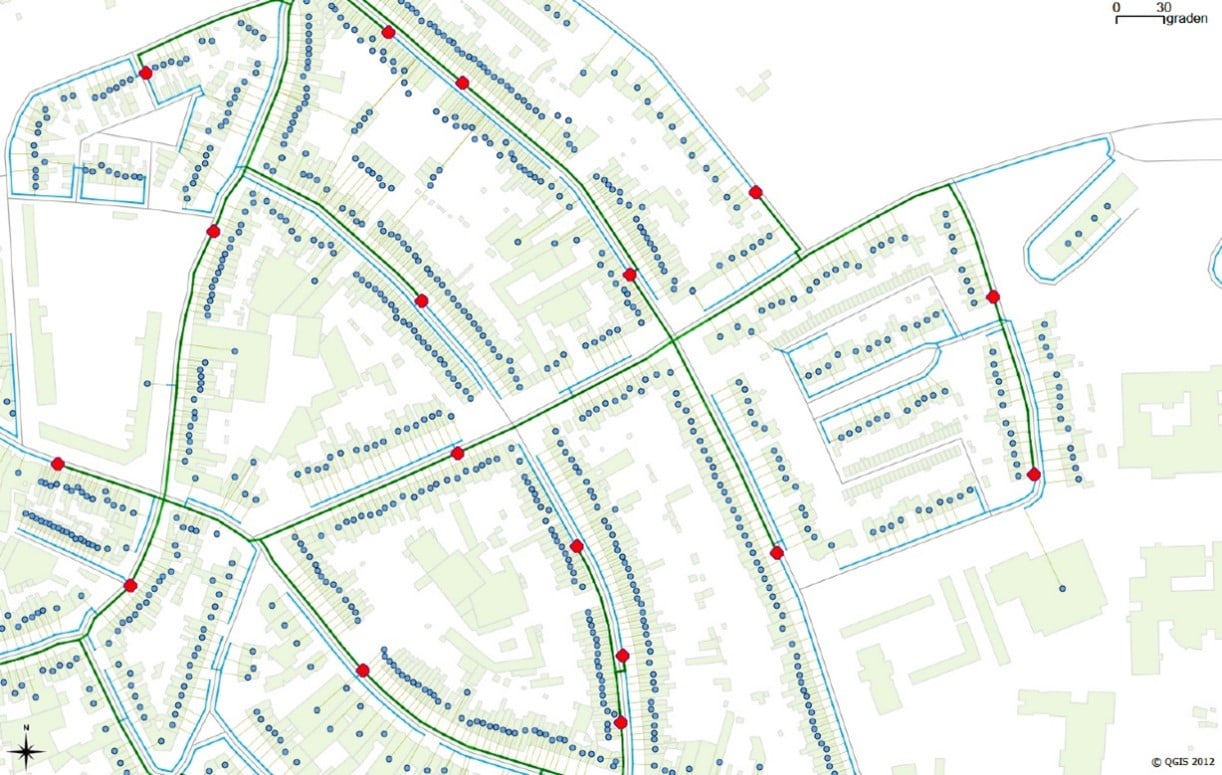
This “one digital format” refers to taking the basis of data and constantly enriching it as you move forward in your process. This can involve field surveys, updated geo-based input data from third-parties, Lidar technology-based solutions, and even feedback from construction crews. The accuracy of this data is essential. It is crucial that this input data is constantly improved throughout the process, and the earlier you start, the better.
Data such as building counts (e.g., SDU, MDU…) and types (e.g., residential, commercial…), geographic and physical obstacles, etc... impacts your network routes and dimensioning. So does your network inventory like ducts, manholes, handholes, cables, fibers, closures, cabinets, nodes, GSM site, etc. This data accuracy will accelerate everything from planning and design, build, all the way through operations and maintenance (O&M) later on.
Step 2: Select the right areas to deploy
The infamous business case! The difficult task of mixing technical and financial analytics is challenging. The foundation to this crucial step is the quality of the data that is used to make your business case.
Having the broadest geographical view possible, like making a national calculation, will provide you with a way to classify the different deployment areas into phased rollouts for your entire program. Obviously, doing this manually is close to impossible taking too much time and yielding questionable results.
We strongly recommend leveraging automated tools for such large-scale network calculations. This activity should be done continuously as your data improves and contexts evolve relatively quickly. Remember, short-term wins should not be the only driver here. Mid- and long-term considerations are key for building a holistic business case that will cover the life of your FTTH network.
By updating this data (see step 1), you vastly improve the accuracy of important elements such as CAPEX requirements for building the network. You want to focus first on the low-hanging fruit. In simple terms, which areas give you the lowest CAPEX with the highest return on investment. Through financial markers such as net present value (NPV) or profitability index (PI) to name just a few, you select these quick-win areas and get going fast.
Step 3: Plan and design converged networks
Now that you’ve optimised your business case with short- and long-term investments, you must ensure that you don’t have to go back and build a fiber network twice. You don’t want to be seen in April, trenching the road to install an FTTH network and be trenching on the same street in September to connect your GSM sites. It’s obvious that this is not the way to go. Unfortunately, we’ve seen this situation happen countless times.
The FTTH Council Europe has undertaken a study to assess the impacts of building a 5G-FTTH converged network. A converged network is a fiber network that consolidates some or all types of service demands (FTTx) served through the Access Network. The conclusion showed that 60% to 95% of 5G related fiber costs can be eliminated with an increased FTTH investment of 1% to 7%, and this is only taking 5G into consideration.
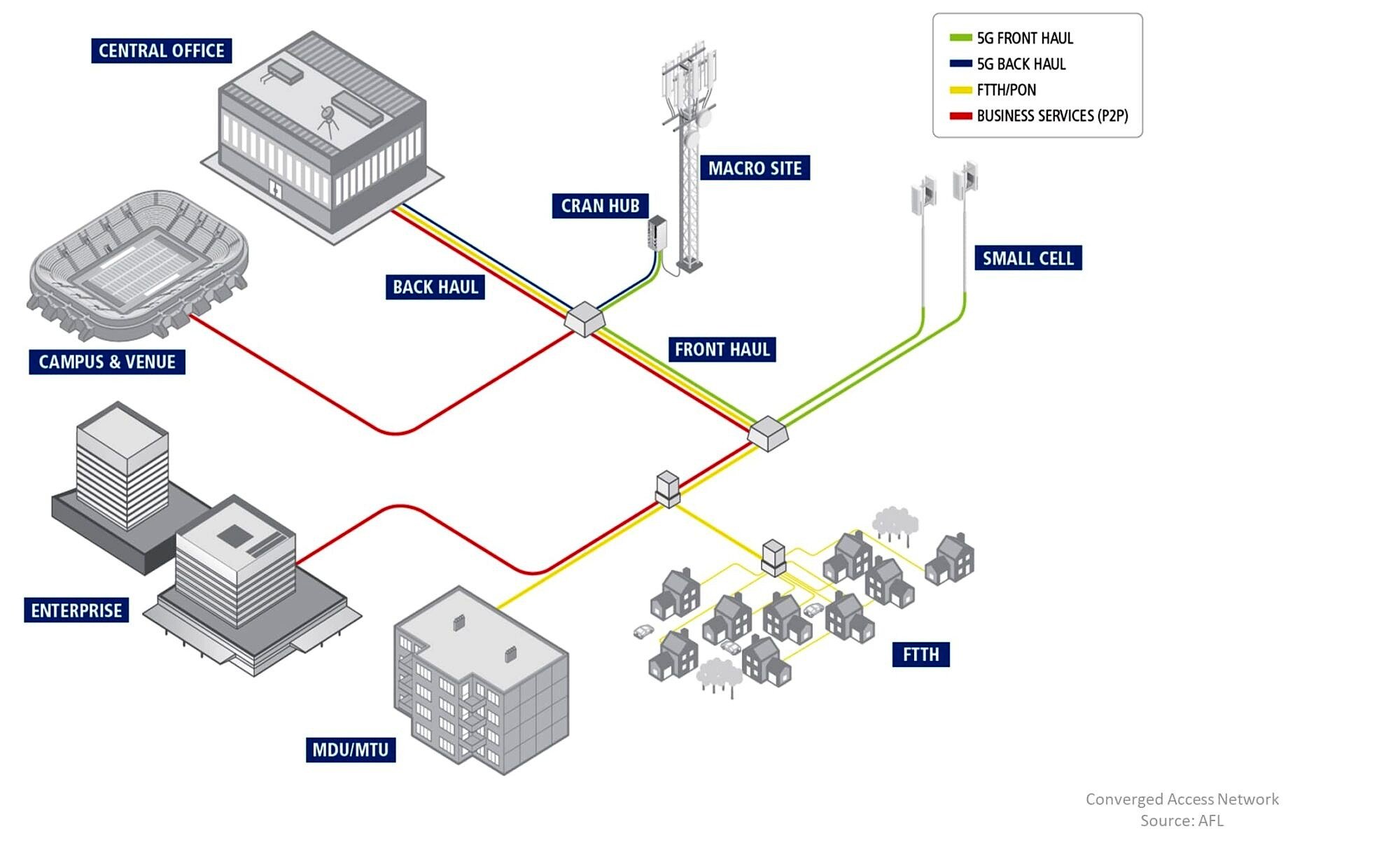
As mentioned before, all contexts are different, and convergence may not always be possible due to different barriers. Nevertheless, we recommend building a converged network as much as possible, where the situation permits it. Even if you don’t build a converged network, its consideration will force you to plan the spare capacity for future needs. Don’t forget to apply this scenario when doing your business case in step 2!
It is important to consider all existing and potential fiber demands when planning and designing a network for both your passive, and active capacity planning. Your business case, your process, and ultimately improve FTTH profits by building joint networks.
Step 4: Use an iterative auto-design process
We all know that having a short time to market is essential. However, planning and design engineers don’t have the time to assess all the different possibilities for a given FTTH deployment area. They’re not able to quickly make multiple FTTH scenarios to find the most optimal one. Now imagine you can make different planning and design scenarios with the click of a button. This is possible with IQGeo's Comsof Fiber software!
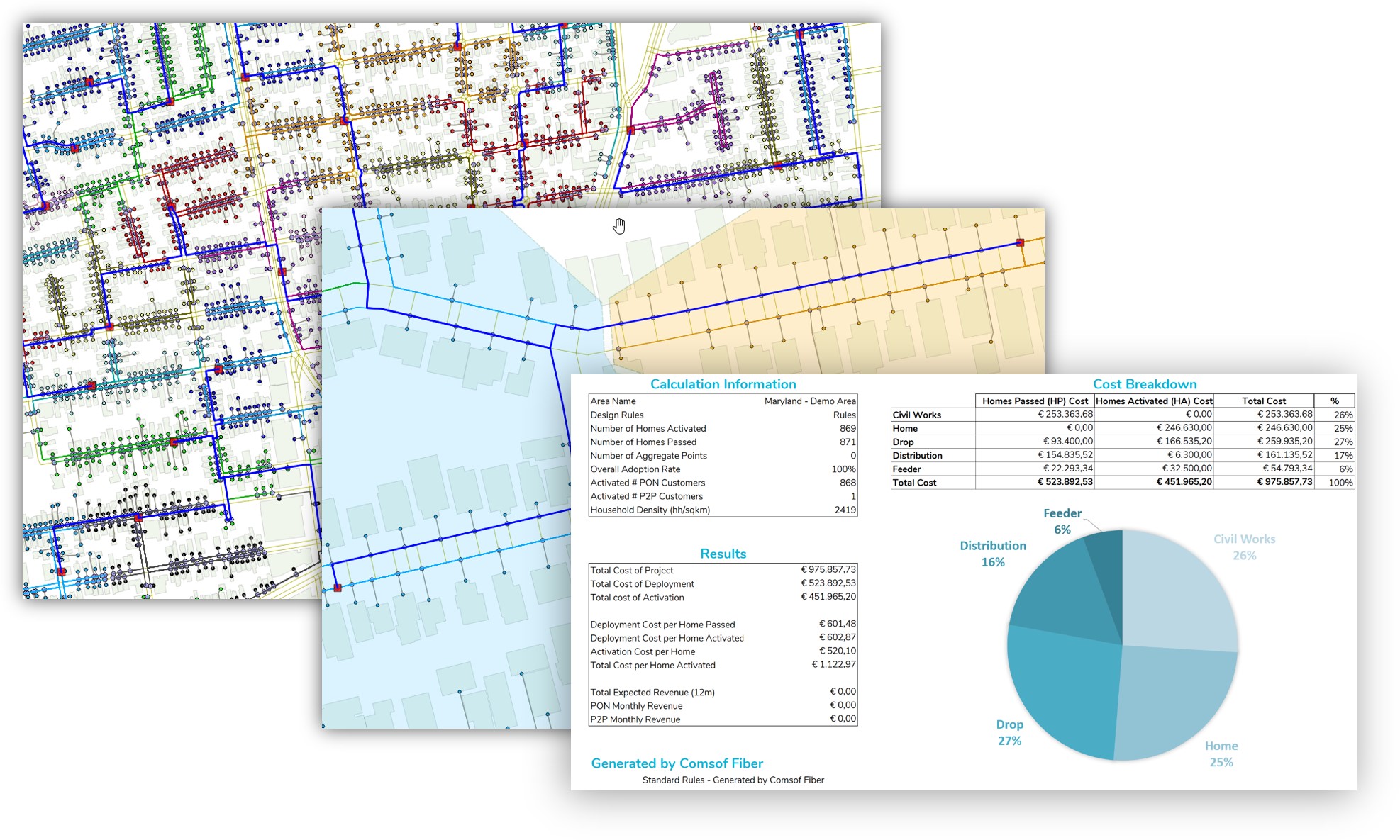
Smart algorithms and AI-powered technologies now enable engineers to make better decisions from the start. The power of automation can be leveraged for the business case calculation on the national level if needed, as well as designing your entire FTTH network. Insights obtained from quickly generating and comparing realistic network designs under different assumptions, allow for optimizing the design rules, even iteratively, as you move to different types of areas throughout your deployment project.
Leveraging an automated design tool can automate your bill of material, ready to use for your procurement and tendering processes well in advance. This reduces the process lead-time (improving time-to-market), ensures quality and uniformity, and minimizes the CAPEX. Reduced costs + faster connectivity = improved FTTH profits.
Step 5: Create buildable designs
You need designs with routes that are realistic, and cost optimized. Don’t let the traditional design methods slow you down with such revisions. To get realistic and optimized design routes, in a short amount of time, we recommend leveraging technology and various software suites. You can ensure that you'll get design routes that can be built in the field, while keeping the rest of the network consistent and correct. With the help of field surveys, you’ll also be able to modify your plans to make them buildable by easily tweaking specific parts of your designs. Is that street crossing not feasible in reality? You can easily explore alternative options within seconds to understand their implication on your total cost.
It's also possible to leverage automation software to create the list of materials needed – even after introducing changes - and share it with your manufacturers to ensure availability once you are ready to build. You can send designs to your build crews in advance for resources planning.
These are all elements that make the planning and design efforts result in high quality buildable routes. By taking these steps, you can avoid going back to the drawing board when preventable anomalies arise during construction. These type of returns in your process directly impacts the 3 questions in our introduction.
Step 6: Automatically generate detailed design data
Revisions also occur in the low-level design stage of your process. Our suggestion is to automate this as much as possible through today’s tools.
Automated software can get into the details and help you modify the fiber usage of a cable while also updating its related elements such as labeling, feeder cable, and the end-to-end connectivity scheme. It will even prevent a designer from reusing an existing duct, while there’s insufficient space for the required fiber capacity.
The smooth flow of design data throughout your process with the help of your software suite is paramount. All stakeholders of the process need access to accurate design data so they can efficiently do their work. Smart software can help with this, by ensuring that the detailed data is consistent with design rules, e.g., labeling or splicing. These types of classic mistakes, often seen with manual work, are avoidable and will save you time.
Use planning and design automation to improve FTTH profits
Today’s tech solutions have become essential to efficiently and successfully deploy a fiber to the home network. However, we seldom make the links between software and its impact on the FTTH bottom line. The combination of planning and design automation software along with complementary solutions such as GIS-based inventory and construction management software can directly improve FTTH profits.
These 6 steps improve the daily operations of the stakeholders that play a role in planning, designing, building, and maintaining a fiber network. Our benchmark shows that automation, coupled with other complementary software technologies, reduces FTTH CAPEX and connects your clients quicker. But most of all, it will help improve FTTH profits for organizations wishing to benefit from these networks for their life span, and beyond.
To learn how IQGeo can help you maximize fiber network ROI with automated planning and design, book a demo with our industry experts and see our end-to-end fiber network management software in action.
Similar articles:

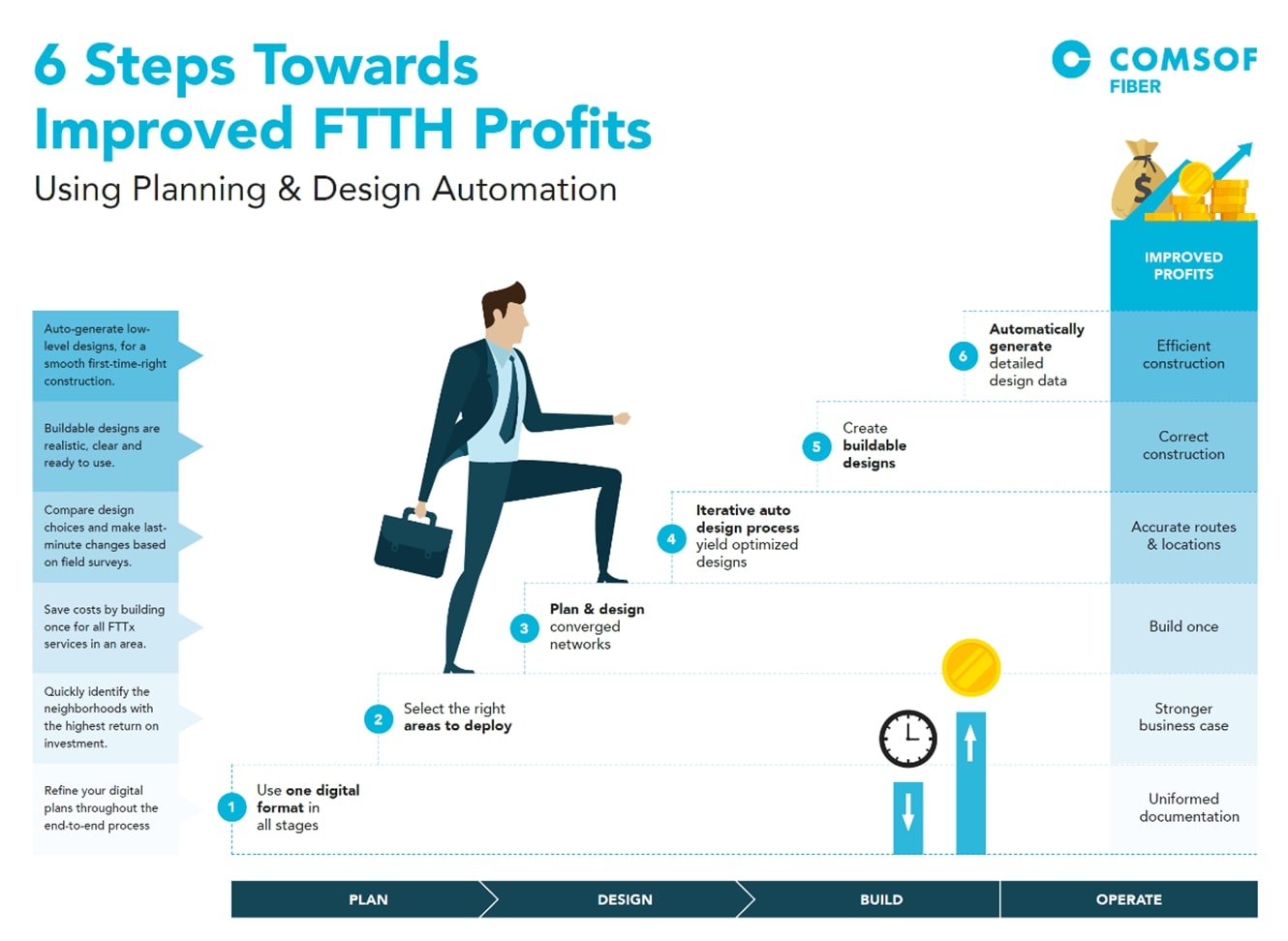

 Previous
Previous




